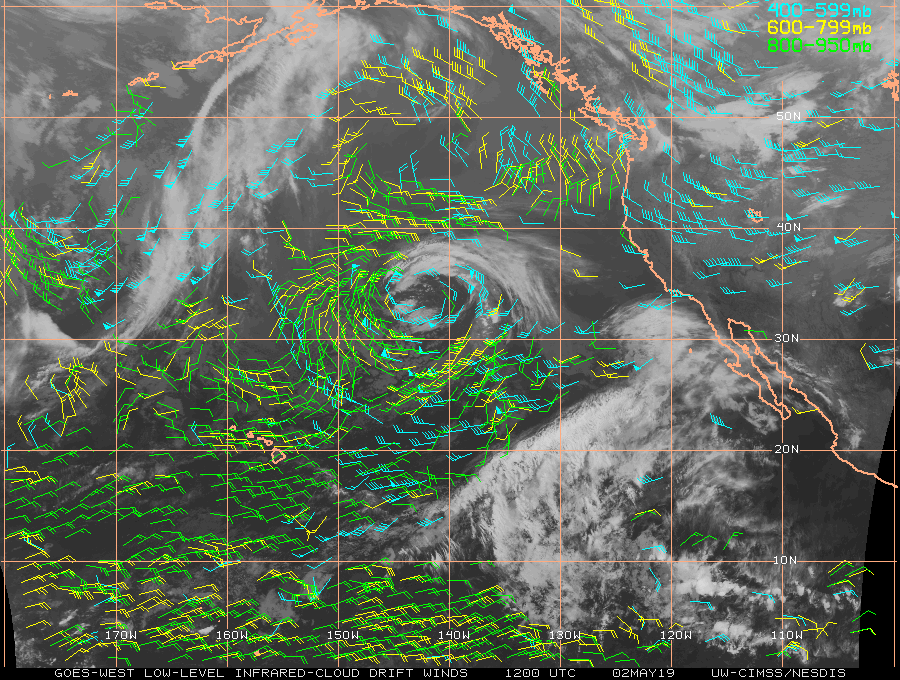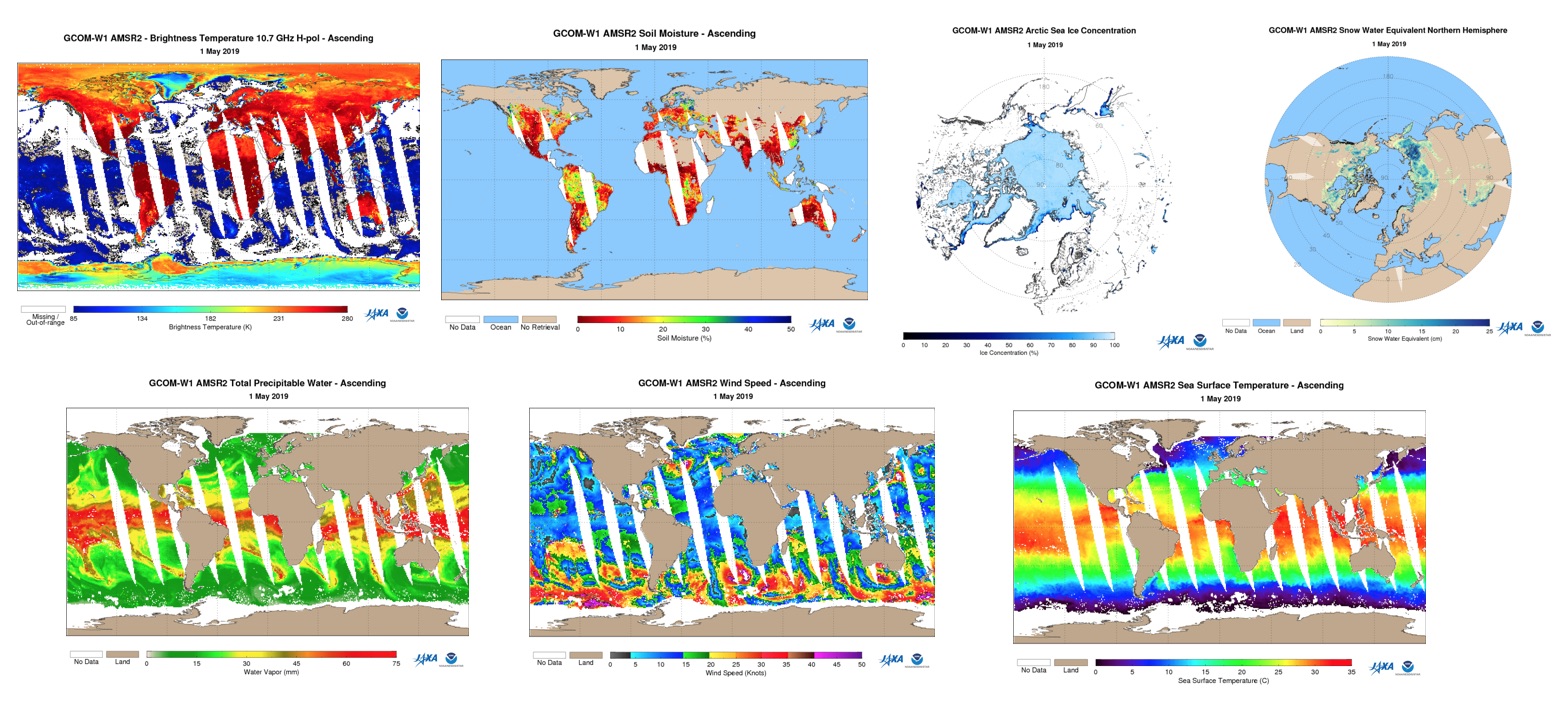
[ Archive ]

 |
CIMSS-NOAA Weekly Report [ Archive ] |
 |
ASPB AND CIMSS WEEKLY HIGHLIGHTS FOR THE WEEK ENDING MAY 3, 2019
IN THE PRESS:
SSEC and CIMSS Scientists in the News: Scientists at the University of Wisconsin-Madison (UW) Space Science and Engineering Center (SSEC) and the Cooperative Institute for Meteorological Satellite Studies (CIMSS) provide expert commentary, interviews, and imagery to news media and participate in events to promote science. In the news this week: 1) CIMSS tropical cyclone researcher Derrick Herndon was interviewed by the New York Times about Cyclone Fani as it moved north through the Bay of Bengal (https://go.wisc.edu/1vcnx5; https://go.wisc.edu/9o1bcx). 2) CIMSS Satellite Blog contributor Scott Bachmeier published posts on "Stationary linear boundary over the Pacific Ocean" (May 2), "Wildfire in Alaska" (May 1), "Pyrocumulonimbus cloud in eastern Russia" (Apr. 30), and "Storm Hannah moves across the British Isles" (Apr. 26). Read more at the CIMSS Satellite Blog (http://cimss.ssec.wisc.edu/goes/blog/). (D. Herndon, CIMSS, 608-262-6741, S. Bachmeier, CIMSS, J. Phillips, SSEC)
 (Click image to enlarge)
(Click image to enlarge)
Figure: One possible explanation for the stationary linear feature over the North Pacific Ocean on 2 May 2019 noted in GOES-17 water vapor imagery, was that it resulted from a convergence of flow around the cutoff low to the east and a digging trough approaching from the west. GOES-15 Infrared cloud-tracked Derived Motion Winds from the CIMSS Tropical Cyclones site showed evidence of some converging flow in that region. Credit: CIMSS, NESDIS.
ITEMS FOR THE ADMINISTRATOR:
ITEMS FOR THE ASSISTANT ADMINISTRATOR:
ITEMS FOR THE OFFICE DIRECTOR, STAR:
Bronze Medal for AMSR2 Products System: AMSR2 team is being awarded the 2019 U.S. Department of Commerce Bronze Medal “For developing the operational GCOM-W1 AMSR2 products system.” The team created an enterprise approach to providing a complete suite of operational products using a non-NOAA, non-U.S. satellite, a novel contribution to the existing NOAA mission framework. This substantial effort involved not only science, but also delicate international relationships with Japan. This is the only NOAA-based system for operational microwave imager products. Prototype products (including ocean wind speed, water vapor, cloud water, sea-surface temperature, rain rate) began to run in real time within two years of the GCOM-W1 satellite launch. They became official operational products after two more years. Additional products (soil moisture, snow cover and sea ice cover) were added approximately one year later. The products are now routinely used in NWS and U.S. Department of Defense operations. The recipients are Paul Chang, Ralph Ferraro, Jeff Key, Xiwu Zhan, Walter Wolf, Limin Zhao, Kirk Liang, Steve Walters, Lihang Zhou, and Jennifer Clapp. (J. Key, E/RA2, 608-263-2605, jeff.key@noaa.gov)
 (Click image to enlarge)
(Click image to enlarge)
Figure: Examples of AMSR2 products.
ITEMS FOR THE DIVISION CHIEF, CoRP:
CIMSS Blog Posts on GOES-R Ground System changes for ABI: Two recent changes to the GOES-R Ground System were documented this week on the CIMSS Satellite Blog. Calibration coefficients for the band 2 "red visible" were modified, causing a decrease in detected radiance for that channel so that Geostationary Operational Environmental Satellite (GOES)-R series Advanced Baseline Imager (ABI) values more nearly matched values from Suomi NPP and NOAA-20 Visible Infrared Imaging Radiometer Suite (VIIRS) (http://cimss.ssec.wisc.edu/goes/blog/archives/33083). In addition, the truncated sinc function interpolation scheme for ABI band 7 (the shortwave infrared band at 3.9 micrometers) was modified to reduce the number of Cold Pixels Around Fires (CPAF). This is the interpolation from ABI dectector space to a geographically fixed grid (http://cimss.ssec.wisc.edu/goes/blog/archives/33096). (S. Lindstrom, CIMSS, 608 263 4425; T. Schmit, NOAA/ASPB, 608 263 0291; C. Schmidt, CIMSS, 608 262 7973)
GOES-16 Calibration Meeting: A meeting was held this week between members of the GOES-R Algorithm Working Group (AWG), Calibration Working Group (CWG) and the GOES-R PRO Team. Last week a major adjustment was made to the Band-2 calibration (approximately 7%). The concerns raised at this meeting were a lack of communication of this change via attributes in the Level-1b files. This issue impacts users of the L1b who wish to process GOES-16/17 consistently over their whole records because there is no plan by NOAA to reprocess new versions of the L1b. The outcome of the meeting was two-fold. First the AWG and CWG will draft a short term plan to add information to the L1b to allow users to uncorrect the data when desired. Secondly, the CWG will discuss with the Global Space-based Inter-Calibration System (GSICS) plans for inclusion of new attributes that will facilitate reprocessing and support other calibration adjustments. (A. Heidinger, E/RA2, 608-263-6757, andrew.heidinger@noaa.gov)
VISITORS:
NEXT WEEK:
LOOKING AHEAD:
| Archived Weeklies Page | Submit a report item |